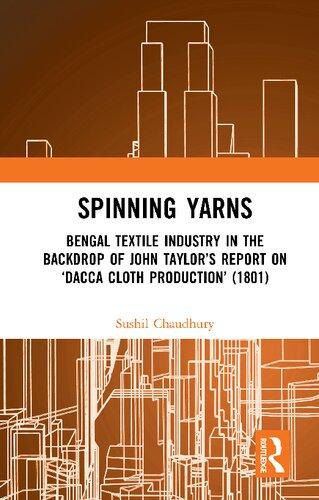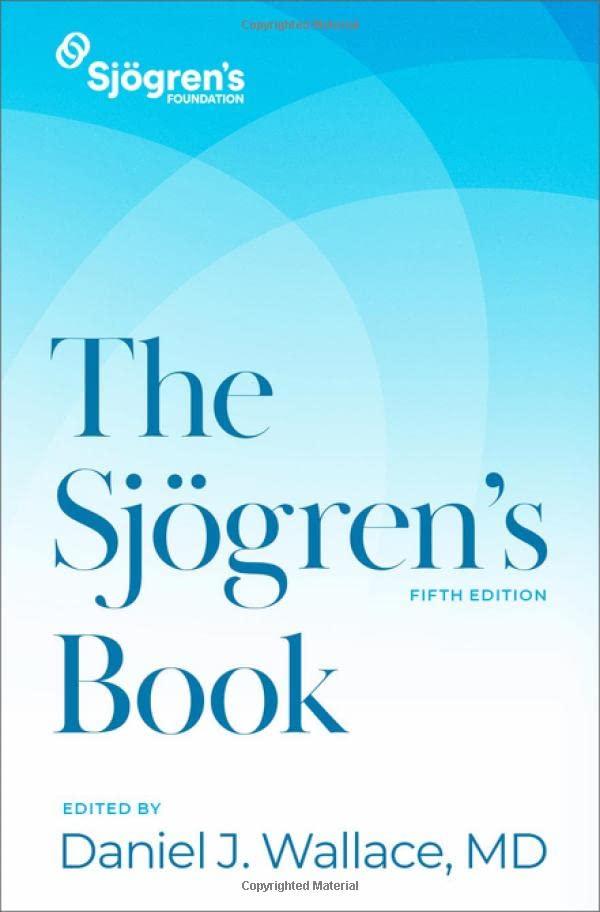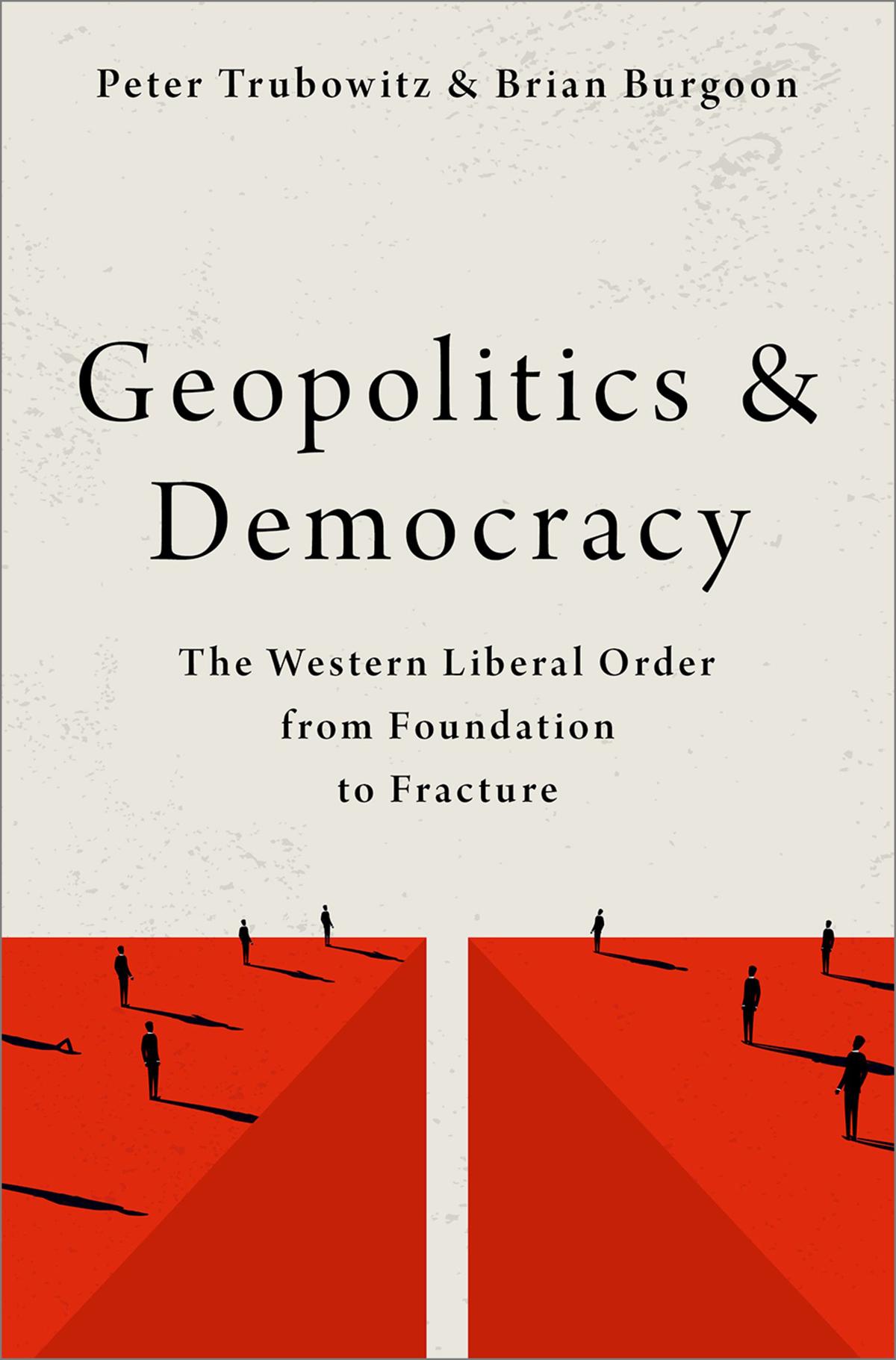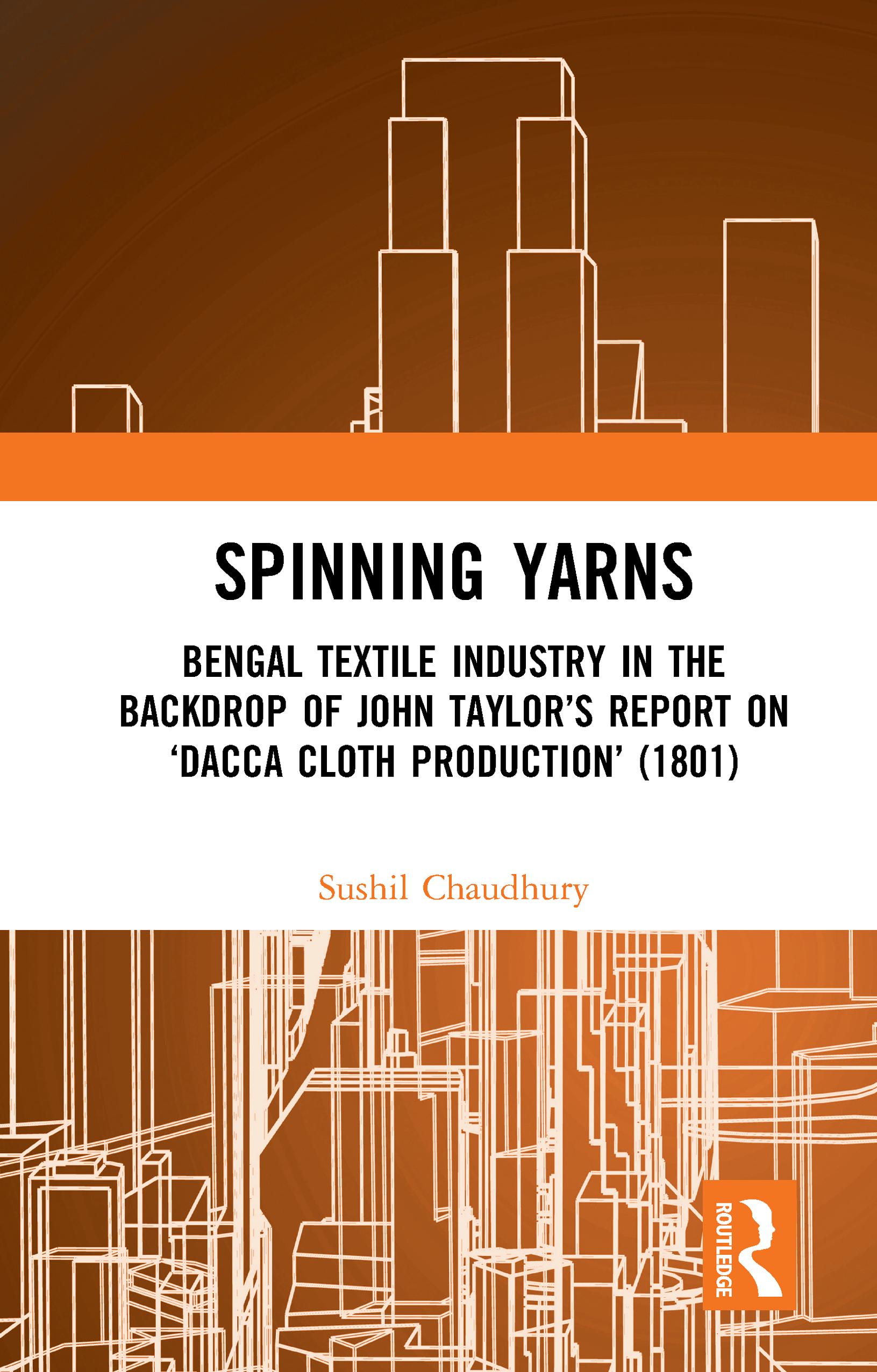SPINNING YARNS
Bengal Textile Industry in the Backdrop of John Taylor’s Report on ‘Dacca Cloth Production’ (1801)
SUSHIL CHAUDHURY
First published 2020 by Routledge
2 Park Square, Milton Park, Abingdon, Oxon OX14 4RN and by Routledge
52 Vanderbilt Avenue, New York, NY 10017
Routledge is an imprint of the Taylor & Francis Group, an informa business © 2020 Sushil Chaudhury and Manohar Publishers & Distributors
The right of Sushil Chaudhury to be identified as author of this work has been asserted by him in accordance with sections 77 and 78 of the Copyright, Designs and Patents Act 1988.
All rights reserved. No part of this book may be reprinted or reproduced or utilised in any form or by any electronic, mechanical, or other means, now known or hereafter invented, including photocopying and recording, or in any information storage or retrieval system, without permission in writing from the publishers.
Trademark notice: Product or corporate names may be trademarks or registered trademarks, and are used only for identification and explanation without intent to infringe.
Print edition not for sale in South Asia (India, Sri Lanka, Nepal, Bangladesh, Pakistan or Bhutan)
British Library Cataloguing-in-Publication Data
A catalogue record for this book is available from the British Library Library of Congress Cataloging-in-Publication Data
A catalog record for this book has been requested
ISBN: 978-0-367-51113-5 (hbk)
ISBN: 978-1-003-05244-9 (ebk)
Typeset in Adobe Garamond Pro 11/13 by Manohar, New Delhi 110002
13. Conclusion
Appendices
Appendix 1: An Account of the District of Dacca, 1801 by John Taylor, Commercial Resident of Dhaka Edited with Detailed Annotations by Sushil Chaudhury
Appendix 2: Letter of a Spinner (Woman) of Santipur, Bengal, published in the Samachar-Darpan of the 5th January 1828
Appendix 3: Names/Terms used in Persian Chronicles in Respect of Textile Production
Illustrations
(between pp. 128-9)
Plate 1: Spinning fine yarn
Plate 2: Warping
Plate 3: Reeling yarn from a reed
Plate 4: Applying the reed to the warp
Plate 5: Weaving
Plate 6: Forming the heddles
Plate 7: Steaming cloths during the process of bleaching
Plate 8: Arranging displaced threads in cloth
Tables
3.1. Prices of Two Types of Muslins Khasa and Mulmul 30
3.2. Cost of Textiles Procured by the Dutch Company
1752/3 and 1754/5 33
3.3. Expensive Textiles Exported by Companies 1752/3 34
6.1. Quinquennial Total & Average of Silk Textile Exports
Asian and European Companies 1750/1 to 1754/5 74
6.2. Production Cost of Taffetas in Kasimbazar, 1756 74
8.1. Quadrennial Total & Average of Dutch &
English Textile Exports 1710/11-1717/18 93
8.2. Share (Percentage) of Textile Value in the Total Export
Value Dutch & the English Select Years (1700-55) 94
8.3. Orders for Textiles from Europe and England
(Number of Pieces Ordered in Select Years) 96
8.4. Share of Garras and Khasas in the Total
Textiles Ordered (Select Years 1720-50) 97
8.5. Quinquennial Total and Average of
Annual Textile Exports (Dutch and English, 1730-55) 99
8.6. Volume and Value of English Textile Exports
(Quinquennial Period, 1740/1-1744/5 & 1748/9-
1752/3) 101
8.7. Share Percentage of Different Categories
of Textiles Exported by the Companies 1730-55
(First Five Years of Each Decade) 102
8.8. Volume and Value of the Dutch and
English Textile Exports 1753/4 and 1754/5
8.9. Dutch-Asiatic Trade (Textiles) [Quinquennial
Total & Average (in Pieces) 1705/6-1709/10 &
1713/14-1717/18]
8.10. Dutch Intra-Asiatic Trade in Bengal Textiles
[Quinquennial Total, Average and Share Percentage
in the Total No. of Pieces 1730-55 (First Five Years of
Each Decade)]
8.11. Percentage Share of Different Textile Categories
Exported by the Dutch to Batavia, Japan and Persia
(First Five Years of Each Decade, 1730-55)
9.1. Geographical Distribution of Piece-goods in
the English Company’s Orders 1681-3
9.2. Geographical Distribution, Unit Price and
Share of Different Areas in the Total Value
of Dutch Textile Export from Bengal to
Holland, 1753-4 and 1754-5
9.3. Quinquennial Total and Average of
Silk Textiles Exports: Asian Merchants and
European Companies 1750/1 to 1754/5
10.1. Manufacturing Costs of Khasas and Baftas in
Burron, 1788 & 1789
10.2. Cost of Garra Production and Weaver’s
Earnings, Birbhum, 1787
10.3. Production Cost of Taffetas in Kasimbazar, 1756
12.1. Export of Textiles from Dhaka by
Asian/Indian Merchants: 1747 and 1797
Prologue
The textile industr y especially in B
y in India is a traditional handicraft cottage industr engal. From time immemorial Indian textiles were exported, again especially from Bengal, to different parts of the world, including the erstwhile Roman Empire. But it was from the mid-seventeenth century that there was a great demand for Bengal textiles in various parts of the world including Europe. As Bengal was the hub of the textile industry, the Bengal textile trade and industry in the backdrop of the Indian scenario will be discussed. In the process the various similarities as also dissimilarities in the textile industry of the various regions of India in the early modern era will also be touched upon.
There is little doubt that the textile industry had a vital role in the socio-economic life of Bengal as also in many parts of India, especially from the mid-seventeenth to mid-eighteenth century. The village economy of the then Bengal was primarily agriculture based – a large part of the population was engaged in agricultural activities. Of these peasant-workers, most of them engaged themselves in weaving textiles in their leisure time. Indeed, in the early modern era, Bengal textile industry was basically a rural cottage industry. Thus in Bengal, as in some other parts of India, the peasant was also a weaver or vice versa. In this production system, the peasant-weaver’s cottage was his workshop. His tools were very few and primitive with which he and his family produced the cloth. The cotton or yarn was purchased by him from the local hat (small village market) and it was his wife who
spun yarn from the cotton. Later the whole family helped in weaving the cloth. When finished, the weaver used to sell it in the local hat or to the dalals or merchants of whom there was no dearth in the market. In general, the practice was that the weaver would receive some advance from the merchant-middlemen, dalals, dadni merchants and the likes for buying the raw materials, especially cotton or thread/ yarn and for maintaining himself and his family during the period (about six months) when he would be busy in weaving cloth. When the demand for cloth was high, the weaver worked full-time and found no time for cultivation. Many peasants even turned full-time weavers to meet the demands of the market.
At this point one might ask the question: why was there such a high demand for textiles? The answer is simple. Besides the personal needs of the peasant-weavers, there was then a huge demand for Bengal textiles in different parts of Asia including India as also in Europe because of the fact that Bengal textile was not only cheap but also of much superior quality as compared to the other textiles available in the markets. After the discovery of direct sea-route from Europe to Asia by Vasco de Gama in 1498, the demand for Bengal textiles in Europe increased considerably from around the mid-seventeenth century. Thus on the one hand the demand of the Asian merchants and on the other that of the Europeans resulted in a huge amount of textile exported from Bengal till the mid-eighteenth century. But the export more or less came to an end with the British conquest of Bengal in 1757 bringing with it whole-scale repressions by the Company officials, its servants and the gomastas, and after the Industrial Revolution in Britain towards the end of the century, the Bengal textile industry started to decline.
Unfortunately, there is a dearth of books written in English dealing exclusively with the Bengal textile industry. Those available are concerned mostly with the muslin industry of Dhaka. For instance, Abdul Karim’s Dhakai Muslin (1965) though a commendable work deals mostly with the Dhaka muslin industry. However, many of his observations are in general applicable to the Bengal industry as a whole. However, it should be pointed out that Karim did not touch upon some very significant aspects of the textile industry. Not only the number of books written in English on the Bengal textile industry
are very few but most of them were written more than a hundred years back. James Taylor’s A Descriptive and Historical Account of the Cotton Manufacture of Dacca in Bengal, published in 1851, contains very few details of the Bengal textile industry as whole – N.N. Banerjee’s Monograph on the Cotton Fabrics of Bengal published in 1878 can hardly be relied upon. Moreover this 62-page book is very difficult to get hold of – only seven copies are available in the world and none in India.
However, there is significant discussion on the Bengal textile industry in some publications of the last century. For instance, J.C. Sinha’s Economic Annals of Bengal (1927), H.R. Ghosal’s Economic Transitions in the Bengal Presidency (1950), N.K. Sinha’s Economic History of Bengal (vol. 1) (1956) are quite remarkable contributions in this respect. Then again from around the 1970s, several treatises on the economic history of Bengal contain very useful information on the textile industry – K.N. Chaudhuri, The Trading World of Asia (1978), Om Prakash, Dutch East India Company and the Economy of Bengal (1985) and The European Commercial Enterprises in Pre-Colonial India (1998), P.J. Marshall’s, Bengal: The British Bridgehead (1987) and the Sushil Chaudhury’s Trade and Commercial Organization in Bengal, 1650-1720 (1975) and From Prosperity to Decline: Bengal in the Eighteenth Century (1995). But all of them deal with Bengal/ Indian textile industry only as a part of other themes. Two significant works dealing exclusively with Bengal textile industry in the second half of the eighteenth and early nineteenth century are D. Mitra’s The Cotton Weavers of Bengal (1978) and Hameeda Hossain’s The Company Weavers of Bengal (1988). But there is next to nothing in them about the textile industry in the pre-modern era. Recently an excellent collection of essays on various aspects of south Indian textiles has been published (Giorgio Riello and Tirthankar Roy (eds.), How India Clothed the World?, 2006) which will be helpful in reconstructing the history of the Indian textile industry in some areas. Unfortunately here too one gets only piecemeal discussions of different regions, and not a comprehensive study of the Indian textile industry in the early modern era as a whole.
However, so far as the regional studies on textiles in various parts of India are concerned, there are quite a few good works till date. S.
Arasaratnam’s and Vijaya Ramaswamy’s work on south Indian textiles, especially Textiles and Weavers in Medieval South India, Prasannan Parthasarathi’s, The Transition to a Colonial Economy: Weavers, Merchants and Kings in South India, 1720-1800 (2001).
Actually while working for more than four decades on various aspects of Indian Ocean trade, the activities of the European Companies and their impact on Indian’s/Bengal’s economy and politics, the commercial enterprises of the Armenians in Bengal/India and their role in the overland trade, etc., in the different archives and libraries of India and abroad, especially in the British Library, London and Algemeen Rijksarchief in Holland, this author has collected a lot of material on the Indian/Bengal textile industry. On the basis of these material as well as those are available as secondary sources, an attempt has been made to write a monograph on Bengal textile industry.
For centuries, Bengal textiles were admired all over the world. Foreign travellers and observers, right from the Roman times down to the late eighteenth century, spoke highly of the fine quality and cheapness of the textiles manufactured in Bengal. As such Bengal textiles were exported to different parts of the world till the late eighteenth century when the British occupation of Bengal on the one hand and the advent of the Industrial Revolution in England on the other sounded the death-knell of Bengal’s traditional indigenous industry. Hence one would have expected that there will be at least several works devoted entirely to the Bengal textile industry and trade in the early pre-Colonial era. Unfortunately it is not the case.
The various aspects of the Bengal textile industry and trade has been discussed in this monograph. The Introduction outlines the main propositions the author has tried to examine in the book. Chapter 2 is an account of the admiration for the Indian textiles, particularly Bengal muslins, from the Roman times and then by Herodotus, Ptolemy, Pliny, among others and later on by the hordes of foreign travellers who visited India from the fifteenth to the eighteenth centuries. Besides, the chapter depicts how the contemporary European observers narrated the wonderful expertise and excellence of the work of the Indian artisans, especially the Bengal weavers and spinners in the seventeenth and the eighteenth centuries. It has also
been demonstrated here that Bengal not only produced expensive muslins and fine textiles but also coarse and cheap cloth for which there was a great demand in many parts of the world. In this context the question that naturally crops up is who were the major exporters of these textiles – the Europeans or the Asian merchants?
Chapter 3 showcases the advantages that Bengal had over other centres of textile production in India, of which the most important and distinct ones may be identified as (1) abundance of highly skilled labour, specially weavers and spinners; (2) remarkably low cost of production; (3) cheap and highly flexible transport facilities in its riverine network and finally, (4) a flourishing agriculture resulting in cheapness of staples like rice, cotton yarn, silk thread, etc. Besides, the Bengal textile industry had certain special features which were not to be found in any other region. These were: the textile industry in Bengal was basically a rural domestic handicraft industry, it was spread all over Bengal. At the same time it was characterized by localization and specialization achieved through generations. Besides, in common with other major centres of textile production like Gujarat, Coromandel, and the Punjab, Bengal enjoyed for long an active regional and intra-Asiatic trade, the presence of an entrepreneurial class from all over Asia and locally produced cotton and silk. But it should be noted that it was the comparative advantages of Bengal, listed above, over the other centres of textile production that gave it the preponderance in textile trade and industry for centuries, including the period under review.
Chapter 4 deals with the production system and organization of the textile industry in Bengal. In this traditional production system, the weaver used to produce cloth in his home with his family. His cottage was his workshop. In this personalized production system, a little capital used to suffice. Sometimes there is reference of head weavers who used to weave cloth with the help of a few other weavers. However, a very important and significant fact about the production system was that the dadni or advanced system was a traditional and integral part of production system. It has also been explained here the raison d’être of the dadni system and its extension in the seventeenth and the eighteenth centuries. Besides, this chapter gives a description of the different stages of cloth production right from spinning to
winding and preparing the yarn, warping, applying the reed to the warp, beaming or applying the warp to the end roll of the loom, preparing the heddles or harness and lastly the weaving, washing, etc.
Chapter 5 is mainly concerned with a detailed discussion of the Dhaka muslin industry. Quite a few things like the origin of the word ‘muslin’, why was the Dhaka muslin the most beautiful, where in Dhaka was the cotton suitable for production of muslin grown, who did spinning of yarn for muslin, which were the aurangs where the best quality and most expensive muslin were produced, how expensive were these muslins and finally what was the production organization like in the royal karkhanas or musbool-khas-kothi where muslins for the royalty and nobility were produced in Dhaka are discussed in this chapter.
Bengal produced not only muslin or fine cloth and cheap and coarse textiles but also silk, and mixed cotton and silk textiles in large quantities. How and where were these textiles produced, what was the process of silk production, how was the silk yarn and who did it, what was the approximate cost of producing silk textiles and finally the comparative role of the Asian and Europeans in the export of silk textiles in Bengal are discussed in Chapter 6.
Chapter 7 is devoted to an analysis of the procurement system of textiles adopted by European and Indian/Asian merchants. It was because of the diffusion of textile production in Bengal (not so much in regions), that procurement was not an easy task. However, the Asian/Indian merchants had certain advantages over the Europeans in procuring textiles. In most cases the Asian/Indian merchants employed gomastas who were in general their kith and kin or people who belonged to the same caste. These people were conversant of the local language and as such could directly contract with the weavers for supply of cloth. Moreover they could cover their food and lodging with a small sum of money compared to the Europeans. But in the case of the Europeans, the process was rather difficult. As their employees did know the local language they had to depend on dadni merchants, dalals or paikars for the supply of export commodities. So they had to employ in their principal factories a local person as the chief merchant who used to arrange for the supply of necessary items for export through dadni merchants or dalals. Basically the
dadni merchants were the mainstay for procurement of textiles and other export goods. Among the dadni merchants in Calcutta, the dominance was of the Seth and Basak families and in Kasimbazar it was the Katma family. But the main difficulty in procurement of export items, especially textiles and silk was that the Companies suffered from a chronic shortage of liquid capital and they had to borrow from the local credit market, especially from the House of the Jagat Seths. All this is detailed in this chapter.
Why and how the Companies came to India/Bengal for trade and what was their role in the export trade of textiles is described in Chapter 8. It also examines why there was a sudden boom in textile export and the comparative role of the English and Dutch Companies in the export of textiles, with quantitative evidence. Besides it gives an account of the different types of cloths exported by the two Companies. It also looks into the role of Bengal textiles in the interAsian trade of the Dutch Company.
There has been a consensus among historians for a long time that the European Companies were the major exporters of textiles from Bengal/India and that compared to it the role of the Asian/Indian merchants was insignificant. Chapter 9 has tried to establish with qualitative as well as quantitative evidences that in textile export, not to speak of silk export, the Asians/Indians were much ahead of the Europeans. This scenario was completely reversed after the British conquest of Bengal in 1757.
Chapter 10 relates to the condition of the artisans – weavers, spinners, etc. – who were the chief pillars of the textile industry. Here we have tried to ask a few questions – how far mobile were the weavers? Were they willing to leave their habitation in the face of oppression by the ruling authority/mahajans/Company officials? How much freedom did they enjoy? Could they produce cloth according to their choice or well compelled to do so at the dictates of others? Was it possible for them to bargain with the dadni merchants/dalals/paikars at the time of the contract? More importantly, what was the economic condition of the artisans and how much did they earn? In the records of the European Companies, there are numerous references to the poverty of the weavers. Was it a fact or figment of an ‘imagination’ of the Company factors? Last but not the least, the condition of the
weavers in the beginning of the eighteenth century is compared here with that of the weavers towards the end of the eighteenth century.
Chapter 11 deals with the debate regarding the absence of technological innovations despite a huge demand for textiles in the eighteenth century. It has also taken up the question how could India/ Bengal afford to meet the demand for the large amount of textiles with the almost primitive form of production system. The next chapter takes a look at the scenario in the other centres of textile production, especially in south, western and northern India in the backdrop of the different aspects of the textile production in India. Lastly, it has been attempted to find out the reasons/causes behind the decline of the Bengal textile industry which began in the second half of the eighteenth century. In conclusion, there is a resume of the main propositions with explanations put forward in the volume.
N.B. It has not been possible to identify some of the aurangs (production centres) of textiles. Again, it was difficult to make out what exactly was the type of some of the cloths as most of them have been out of circulation for long and have become obscure. Hence we had to keep the names as found in the records. There might be a little repetition here and there but that was necessary for clarification of some issues.
CHAPTER 2
Historical Perspective
Ta
he reputtion of the Bengal textiles industry reached its zenith in the early modern era. The textiles produced in Bengal, especially the finer varieties, had received overwhelming appreciation from observers in different countries for centuries. In fact, a variety of Bengal textiles were exported to different parts of the world even more than 2,000 years back. James Taylor noted that the famous muslins of Dhaka were appreciated very much in Europe even in the first century ad. Draped in exquisite muslin attire, the beautiful ladies of the Roman Empire loved to exhibit their figure in them. Muslin was indeed a prized fabric for them.1 Again, an anonymous publication of the first century ad, Periplus of the Erythrean Sea referred to a muslin, ‘Gangitiki’, which came most probably from East Bengal.2 Indeed it was a fact that prominent personalities right from Herodotus and Strabo down to Ptolemy, Pliney, among others referred to Bengal muslins in their works. The Arab geographer and traveller, Sulaiman, who visited India in the ninth century, wrote in his work Silsilat-ut-Tawarikh that ‘cotton fabrics made in the kingdom of Rahmi [which has been identified as East Bengal] are so fine and delicate that a dress made of it may pass through a signet ring’.3 So it is apparent from the above that Bengal textiles were quite well known and exported to various countries of the world. Not only that, the delicacy and beauty of Bengal textiles was noted by numerous foreign travellers and observers who came to India. An Arab traveller from Morocco who visited Bengal in the mid-fourteenth
century was so impressed when he saw the muslins in Sonargaon that he remarked that such beautiful and exquisite cloth of so fine a quality could hardly be found anywhere in the world.4 Similarly, the Buddhist monks and travellers who visited Bengal in the fifteenth century, spoke highly of the Bengal textiles. The Chinese traveller Mahuan who visited Bengal in the early fifteenth century mentioned about the muslins of Sonargaon like malmals, etc., and observed that it is a wonder how the people could make such fine quality cloth there.5
Duarte Barbosa, the Portuguese traveller, noticed early in the sixteenth century that ‘different kinds of fine cloth such as estravantes used as headdresses by Portuguese ladies and as turbans by the Arabs and Persians, mamonas, duguazas, chowtars, sinabafa and beatilha were manufactured in Bengal. Though it is difficult to these piece-goods, it may be tentatively suggested that the above terms stand respectively for sirband, malmal, du-gazi cloth, chowtars, sinaband and bethilas.6 Again, the Venetian traveller, Ludovico Varthema, who visited Bengal in the same century noted that varieties of fine fabrics like bairam, mamone, lizati ciantar, donzar and sinabaf, etc., were available here. Towards the end of the sixteenth century, the English traveller, Ralph Fitch, wrote that Sonargaon is a ‘town . . . where there is the best and finest cloth made in India.’7 Almost at the same time the greatest historian of the Mughal era, Abul Fazl, noted that ‘the sarkar of Sonargaon produces a species of muslin very fine and in great quantity’.8
Evidently the Bengal textiles, especially, the finer varieties had overwhelming appreciation all over the world for centuries. Even in the late 1760s, the Dutch traveller Stavorinus stated that the Bengal muslins were made so fine that a piece of twenty yards in length or even longer could be put into a common pocket ‘tobacco-box’.9 It was not only the visitors from the West who were surprised by the extreme fineness and exquisite beauty of the Bengal textiles, but even to Robert Orme, the official historian of the English East India Company who lived in Bengal in the early 1750s, it remained a puzzle ‘how works of such extraordinary niceness can be produced by a people . . . who must be deprived of such tools as seem absolutely necessary to finish such manufactures.’10 His ‘surprise was heightened’ when he found that in Dhaka ‘where all the cloths for the use of the king and his seraglio are made’ were of ‘such wonderful fineness as
to exceed ten times the price of any linens permitted to be made for Europeans, or any other else in the kingdom’. He tried to account for the exceptional quality of the fabrics by referring to the high skill of the Bengali weavers and comparing it with that of their European counterparts. He wrote:11
As much as an Indian is born deficient in mechanical strength, so much his whole frame endowed with an exceeding degree of sensibility and pliantness. The hand of an Indian cook-wench shall be more delicate than that of an European beauty; the skill and features of a porter shall be softer than those of a petit maitre.
Similarly, the Danish report on the textile production in Bengal written in 1789, also reflected on how ‘through unwearying industry and with the help of a few paltry tools’ the weavers in Bengal produced ‘the prettiest and finest cloths with use of machines’.12 In his famous report on the Dhaka cloth manufacture, John Taylor, the Commercial Resident of Dhaka wrote in 1800 dwelt on the ‘singular beauty of the fabric’ and ‘the extraordinary skill requisite in manufacturing it’.13 But one should remember here that Bengal did not only manufacture muslins and fine textiles, it had at the same time a traditional and flourishing trade and industry in ordinary and medium quality which enjoyed a substantial market in many parts of India and Asia in general. The export of textiles from Bengal to Coromandel, Ceylon, South-East Asia, as also to West and Central Asia in the seventeenth and the first half of the eighteenth century comprised mainly coarse and medium quality piece-goods while the trade with areas in the region of Agra, Lahore, Multan, the Persian Gulf and the Red Sea might have been mostly in finer quality fabrics. The European Companies, however, exported both ordinary and fine textiles throughout the period of our study. But they were not interested in sending high quality expensive muslins as there was no demand for these in Europe. However, they exported medium quality and less expensive muslins.
It is generally held that there was a boom in the Bengal textile industry with the coming in of the Europeans. Some historians believe that consequent to the export of textiles by the Companies, the textile industry in Bengal prospered immensely which in turn led to a
flourishing economy. It seems quite natural to think so tentatively because it is possible to get complete quantitative data on the Companies’ exports from Bengal in the archives in the British Museum, London or the Algemeen Rijksarchief, in The Hague. And from these materials, it is easy to build a rosy picture of the European exports. As a result, the exports by Asian/Indian merchants from, of which textiles were the most significant items, gets almost lost in the backdrop of the quantified European trade. But in the case of Asian/ Indian trade, the main problem is that quantitative evidence of the Asian/Indian trade is very hard to come by. As a result it is not possible to put forward enough quantitative data on Asian/Indian trade in the face of the European trade and as such the European trade is considered much more than the Asian/Indian trade.
But if one goes through the Company records, whether the Dutch or the English, very carefully and meticulously, one would find that the Asians/Indians were equally competing with the Europeans in the commodity market, whether it was market for textiles or for raw silk. In fact, the Europeans were often writing to their Home offices that the Asians/Indians were dominating these markets buying anything and everything they want leaving very few things for them. But if one is a little cautious and keep in mind all the time, the Asian/ Indian perspective, and with a bit of luck, one finds at least some, though perhaps not enough, quantitative evidence on the Asian/ Indian trade. And we are lucky in that respect. With whatever evidence we have at the moment, we can raise the question whether the European trade was more significant than the Asian/European trade in the seventeenth and the eighteenth century? We shall try to find an answer to this question in the present volume.
NOTES
1. James Taylor, Cotton Manufacture, pp. 46-8; Dr. Ure, Cotton Manufacture in Britain, p. 54; Syed Murtaza Ali, ‘Dacca Muslin’, in Journal of the Asiatic Society of Bengal, vol. XIII, no. 2, 1968, p. 203.
2. J.C. Sinha, ‘Dacca Muslin Industry’, in Modern Review, April 1925, p. 400.
3. Elliot & Dowson, History of India, vol. 1, p. 5; Abdul Karim, Dhakai Muslin, pp. 48-52.
4. Ibn Batuta, The Voyages of. . ., vol. 4, p. 122.















